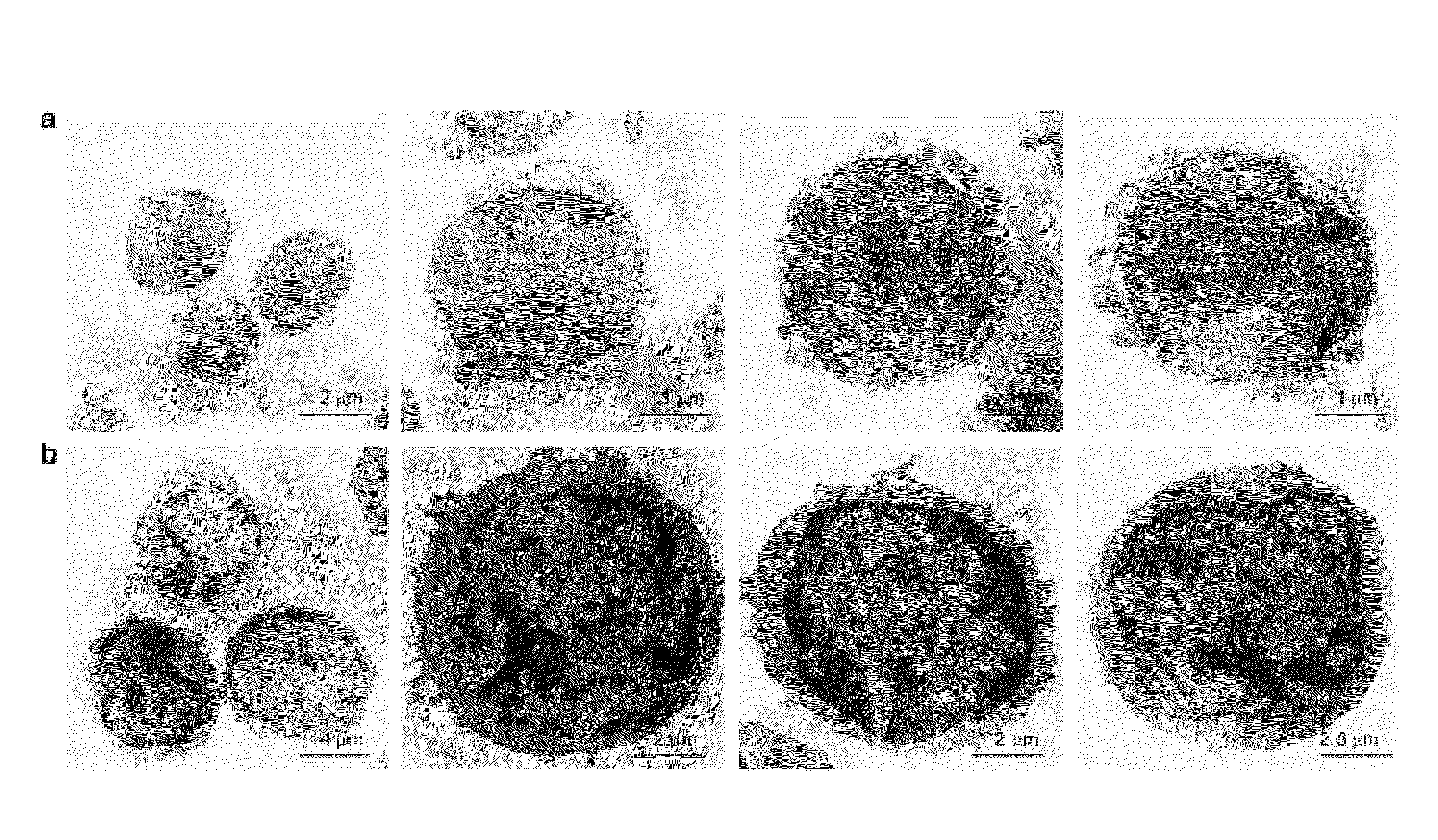Uses and isolation of very small of embryonic-like (VSEL) stem cells
a technology of embryonic stem cells and stem cells, which is applied in the field of identification, isolation, and use of very small embryonic stem cells, can solve the problems of inability to reproduce results suggesting transdifferentiation with neural stem cells, inability to transdifferentiate and/or plasticity of circulating hpsc and/or their progeny, and failure to develop human es (hes) cells
- Summary
- Abstract
- Description
- Claims
- Application Information
AI Technical Summary
Benefits of technology
Problems solved by technology
Method used
Image
Examples
example 1
Bone Marrow Cells
[0235]Murine mononuclear cells (MNCs) were isolated from BM flushed from the femurs of pathogen-free, 3 week, 1 month, and 1 year old female C57BL / 6 or DBA / 2J mice obtained from the Jackson Laboratory, Bar Harbor, Me., United States of America. Erythrocytes were removed with a hypotonic solution (Lysing Buffer, BD Biosciences, San Jose, Calif., United States of America).
[0236]Alternatively, MNCs were isolated from murine BM flushed from the femurs of pathogen-free, 4- to 6-week-old female Balb / C mice (Jackson Laboratory) and subjected to Ficoll-Paque centrifugation to obtain light density MNCs. Sca-1+ cells were isolated by employing paramagnetic mini-beads (Miltenyi Biotec, Auburn, Calif., United States of America) according to the manufacturer's protocol.
[0237]Light-density human BMMNCs were obtained from four cadaveric BM donors (age 52-65 years) and, if necessary, depleted of adherent cells and T lymphocytes (A-T-MNC) as described in Ratajczak et al. (2004a) 103...
example 2
Sorting of Bone Marrow-Derived Cells
[0238]For murine BM cells, Sca-1+ / lin− / CD45− and Sca-1+ / lin− / CD45+ cells were isolated from a suspension of murine BMMNCs by multiparameter, live sterile cell sorting using a FACSVANTAGE™ SE (Becton Dickinson, Mountain View, Calif., United States of America). Briefly, BMMNCs (100×106 cells / ml) were resuspended in cell sort medium (CSM), containing 1× Hank's Balanced Salt Solution without phenol red (GIBCO, Grand Island, N.Y., United States of America), 2% heat-inactivated fetal calf serum (FCS; GIBCO), 10 mM HEPES buffer (GIBCO), and 30 U / ml of Gentamicin (GIBCO). The following monoclonal antibodies (mAbs) were employed to stain these cells: biotin-conjugated rat anti-mouse Ly-6A / E (Sca-1; clone E 13-161.7) streptavidin-PE-Cy5 conjugate, anti-CD45− APCCy7 (clone 30-F11), anti-CD45R / B220-PE (clone RA3-6B2), anti-Gr-1-PE (clone RB6-8C5), anti-TCRαβ PE (clone H57-597), anti-TCRγδ PE (clone GL3), anti-CD11b PE (clone M1 / 70) and anti-Ter-119 PE (clone ...
example 3
Side Population (SP) Cell Isolation
[0241]SP cells were isolated from the bone marrow according to the method of Goodell et al. (2005) Methods Mol Biol 343-352. Briefly, BMMNC were resuspended at 106 cells / ml in pre-warmed DMEM / 2% FBS and pre-incubated at 37° C. for 30 minutes. The cells were then labeled with 5 μg / ml Hoechst 33342 (Sigma Aldrich, St. Louis, Mo., United States of America) in DMEM / 2% FBS and incubated at 37° C. for 90 minutes. After staining, the cells were pelleted, resuspended in ice-cold cell sort medium, and then maintained on ice until their sorting. Analysis and sorting were performed using a FACSVANTAGE™ (Becton Dickinson, Mountain View, Calif., United States of America). The Hoechst dye was excited at 350 nm and its fluorescence emission was collected with a 424 / 44 band pass (BP) filter (Hoechst blue) and a 675 / 20 BP filter (Hoechst red). All of the parameters were collected using linear amplification in list mode and displayed in a Hoechst blue versus Hoechst...
PUM
| Property | Measurement | Unit |
|---|---|---|
| Weight | aaaaa | aaaaa |
| Weight | aaaaa | aaaaa |
| Fraction | aaaaa | aaaaa |
Abstract
Description
Claims
Application Information
 Login to View More
Login to View More - R&D
- Intellectual Property
- Life Sciences
- Materials
- Tech Scout
- Unparalleled Data Quality
- Higher Quality Content
- 60% Fewer Hallucinations
Browse by: Latest US Patents, China's latest patents, Technical Efficacy Thesaurus, Application Domain, Technology Topic, Popular Technical Reports.
© 2025 PatSnap. All rights reserved.Legal|Privacy policy|Modern Slavery Act Transparency Statement|Sitemap|About US| Contact US: help@patsnap.com



